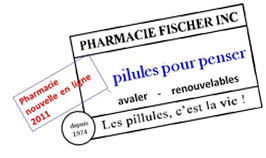In Contextu
Gabriel Borba In Contextu
My commentary
Paulo Figueiredo was a good and patient friend. I related to his gallery in various ways. I gave courses, presented Vilém Flusser for a series of lectures, there were three, if I can remember, and in years no exhibition. I am not sure how the time came and I asked him to allow me a small and intimate and short-lived thing that was resolved with my "conceptualist" papers, as they say, from some drawings of Pequeno Mobiliário and Jaula da Anta, passing through today called Gestörte Numeration; Mutations; Quality; all Rebusteia; Canceled. .. in a mount that filled two walls of the small room on the upper floor of the Gallery on Rua Bela Cintra, São Paulo. In the center of the room was a table, board on an easel, with works by friends of the same interest. In my memory it comes, Julio Plaza, Amelia Toledo, Mario Ishikawa, Regina Siveira, Ubirajara Ribeiro and so many others tha tcould have been there, especially those who participated in the On Of publication.
An exhibition that was left without documentation. Only the note I made as an invitation and some stories to tell remained. The most touching and moving was the affectionate message that Hervé Fischer left written on a backrest at the entrance to the room. And for him, Hervé, I asked if he remembered, at least, the date he was in Brazil
Here is our correspondence between 25 and 30 May 2020:
Gabriel Borba: Cher Hervé, en ce moment, je travaille sur mon site et je monte une exposition que j'ai faite et je sais que tu l'as visitée. Le problème est que je ne connais pas l'année. Sachant que tu étais là, je te demande si toi tu te souviens de ta voyage à São Paulo entre les années 70 et 80. Je te remerci
Gabi
Hervé Fischer: Cher Gabi,
Je suis venu en 76 et en 80.
Je me souviens d’avoir visité ton expo. Mis je ne sais plus laquelle de ces deux années.
Salutations
Hervé
GB: Cher Hervé, merci pour l'information. La seule chose dont je me souvienne de cette exposition, c'est que tu as écrit un message sur le tableau noir qui était là et que j'ai vraiment aimé. Mais, pauvre moi, je ne me souviens pas des mots.
Il était l’anné 1980.
Ton frère,
Gabi
HF: Alors il faut que je réinvente les mots. Qd l’expo sera sur ton site, dis-le moi.
Et en voilà d’autres:<image0.jpeg>
Hervé
GB: Certes Hervé. Ta proposition est très bienvenue et je te propose de l’étendre jusq'a publié dans mon site notre correspondence, après la présentation qui existe déjà, avec les beaux tweets arte qui sont venue ensamble.
Après tout, comme tu pourrais voir, la exposition s'appele Gabriel Borba In Contextu et il avait au millieu de la sale une grosse table avec les travailles des mes amies les plus chére. On la ‘remake’ ... avec ton travail. Je te fais mon "contextu"
Dis-moi si c'est une bonne idée.
Gabi
HF: Prezado Gabi,
Eu revisitei o seu site. Será com muito prazer, se você citar nossos intercâmbios e as tweets artes que eu lhe enviei. Aqui está outro.
Amizade.
Hervé
HF: J'aime beaucoup cette définition de l’oeuvre d’art que je te propose:
Amitié
Hervé
GB: Salve Hervé.
Recebi mais este. E gostei. Lembro bem do Julio Plaza declarando que “Arte é um bem que faz mal”
Aviso você quando começar a colocar no site nossa correspondência que explicará o motivo da sua presença. Farei de modo que você poderá recusar ou pedir alterações em alguma coisa.
Abraço
Gabi
HF: Obrigado, Gabi. Tenho boas lembranças do Julio Plaza e da Regina Silveira. Eu gosto dessa linha que você citou. Em seu site, você faz o que quiser.
Saudações de amizade.
Hervé

 HF.Thanks, Gabi. It was a great pleasure to revisit your site completed with our exchanges. How wonderful to be able to communicate so friendly and so quickly despite the distance between Quebec and Brazil and the pandemic that prevents us from taking the plane. This digital ease of use - and there is also digital horror - promotes the development of our "increased awareness", planetary and in real time, thanks to the techno-humanism that underlies our hyperhumanism: more humanism thanks to the multiplication of our hyperlinks.
HF.Thanks, Gabi. It was a great pleasure to revisit your site completed with our exchanges. How wonderful to be able to communicate so friendly and so quickly despite the distance between Quebec and Brazil and the pandemic that prevents us from taking the plane. This digital ease of use - and there is also digital horror - promotes the development of our "increased awareness", planetary and in real time, thanks to the techno-humanism that underlies our hyperhumanism: more humanism thanks to the multiplication of our hyperlinks.
Hervé (This last statement was originally written in Portuguese)















































